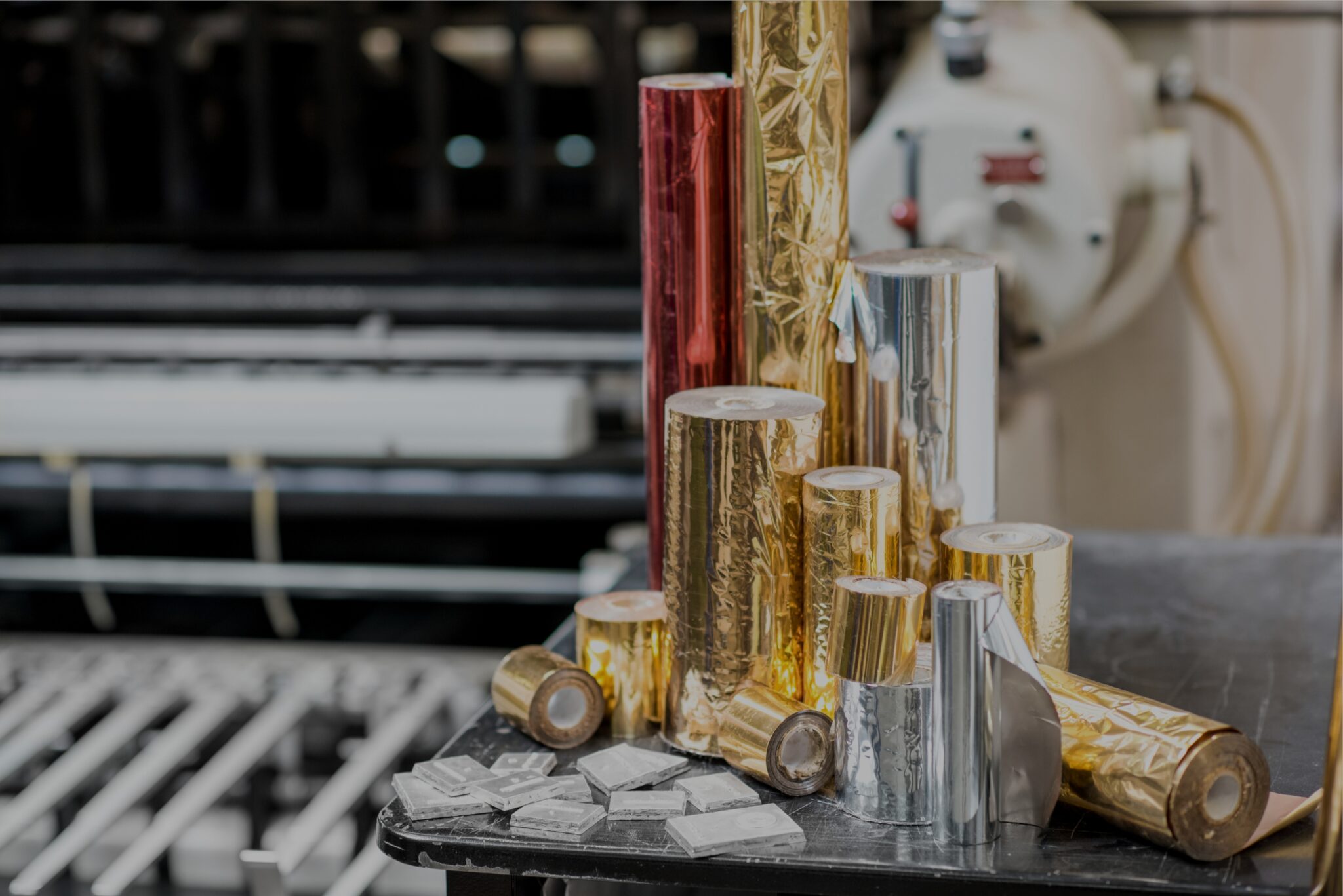

Originally published on fastradius.com on July 13, 2020
Hot stamping is a lithography printing process that uses heated image molds or stamping dies to transfer metal foils or pre-dried inks onto a surface.
Typically, the process works as follows: the hot stamping machine heats an engraved mold or die, which then presses marking foil onto the surface. The foil is deposited only where the hot stamp comes in contact with the product material, allowing engineers to create elegant, embossed designs on parts and assemblies in post-production. Hot stamping foils have three layers: a color layer (which can be pigment or metallic), an adherence base, and a release layer. Innovations in digital printing even enable hot stamping three-dimensional images with holographic foil.
Hot stamping is a versatile, precise, and efficient method for printing on surfaces, and is often used to personalize or decorate products. Here’s a quick rundown on some of the key benefits of the hot stamping process, as well as key considerations to keep in mind.
One of the most significant advantages of hot stamping is that it can be used to treat a wide range of common product materials — including plastics, rubbers, and metals — in addition to more specialized materials like wood, leather, and glass. Hot stamping foil can even be applied to coated objects without damaging the coating. As such, it can be effectively applied to parts ranging from pencils and book bindings to cosmetic packaging and cable ties.
Hot stamping is also a clean and incredibly effective process. Because hot foil stamping machines work with rolls of metal foil or pre-dried inks, engineers can avoid mixing liquid inks and cleaning up messy spills.
Hot stamping also consistently produces high-quality results — regardless of the pigment or metallic coloration of the foil, adherence bases are created to have a strong grip on product surfaces. However, some materials — such as leather — require specialty foils in order to properly adhere, which is important for product managers to keep in mind.
While marking foils are designed to be durable, environmental conditions can cause them to fade over time. In instances when a metal die is pressed into plastic or wood parts, the die can actually brand the material, ensuring that a mark remains even if the foil wears away.
Though primarily used as a finishing process, the hot stamping method has other applications, as well. For instance, in automotive manufacturing, hot stamping can be used to maximize steel malleability. The process is similar to warm forming; however, the dies are cold when pressed into the heated steel, which creates Martensite microstructures in the steel that give the part exceptional strength. This makes hot stamping useful in the production of strong vehicle cabins and safety cages, among other parts.
The one significant limitation of the hot stamping foil manufacturing process is that it does not allow for printing extremely small letters without losing definition. Otherwise, so long as the design can be made into a mold or die, it can generally be used to transfer stamping foil without issue. If high-definition small lettering is required, pad printing or screen printing may be more suitable options.
Another key consideration is the choice of material for the die that presses the stamping foil. Metals like brass, copper, magnesium, and steel are commonly used. Magnesium dies are easiest and least expensive to make but are less durable. Copper and brass offer greater durability and require greater costs to produce, while hardened steel dies are virtually indestructible and provide the best foil transfers. Steel dies are expensive to produce, but due to their durability, become incredibly cost-effective when used in high-volume production runs.
Hot stamping products that feature complex shapes or surfaces that aren’t perfectly flat presents a challenge. However, manufacturers often overcome this hurdle by using silicone-based stamping dies. Because they are inherently softer than metal stamps, silicone dies conform better to irregular surfaces or shapes, which enables more precise transfers.
Ultimately, hot stamping is an effective means by which to customize or embellish parts, or to increase the malleability of materials such as steel. In any case, the process is versatile and relatively simple.
Product teams hoping to leverage hot stamping in their next project should look no further. SyBridge works to expand the boundaries of what’s possible with modern manufacturing. Our team of engineers and designers work closely with every customer during each stage of the production lifecycle — from design to post-production finishing. We create more than parts — we build trusting partnerships focused on manufacturing superior components and assemblies on-time, every time. We can even update legacy products using newer, innovative manufacturing methods. Contact us today to start your next product run.
Forget typical cycle times. We're pushing the boundaries of conformal cooling. While traditional approaches deliver…
Forget typical cycle times. We're pushing the boundaries of conformal cooling. While traditional approaches deliver…
From left to right: Brayden Janak (apprentice); Logan Vifaquain (CNC machining, Programming and CMM); Ron…
SyBridge Technologies is proud to announce we have been awarded the 2023 General Motors Supplier…
Today, designers and engineers are accustomed to working with digital tools in their day-to-day jobs.…
Optimizing Your Injection Molding Process for Cost-Effective Manufacturing Excellence In today’s competitive landscape, manufacturers are…